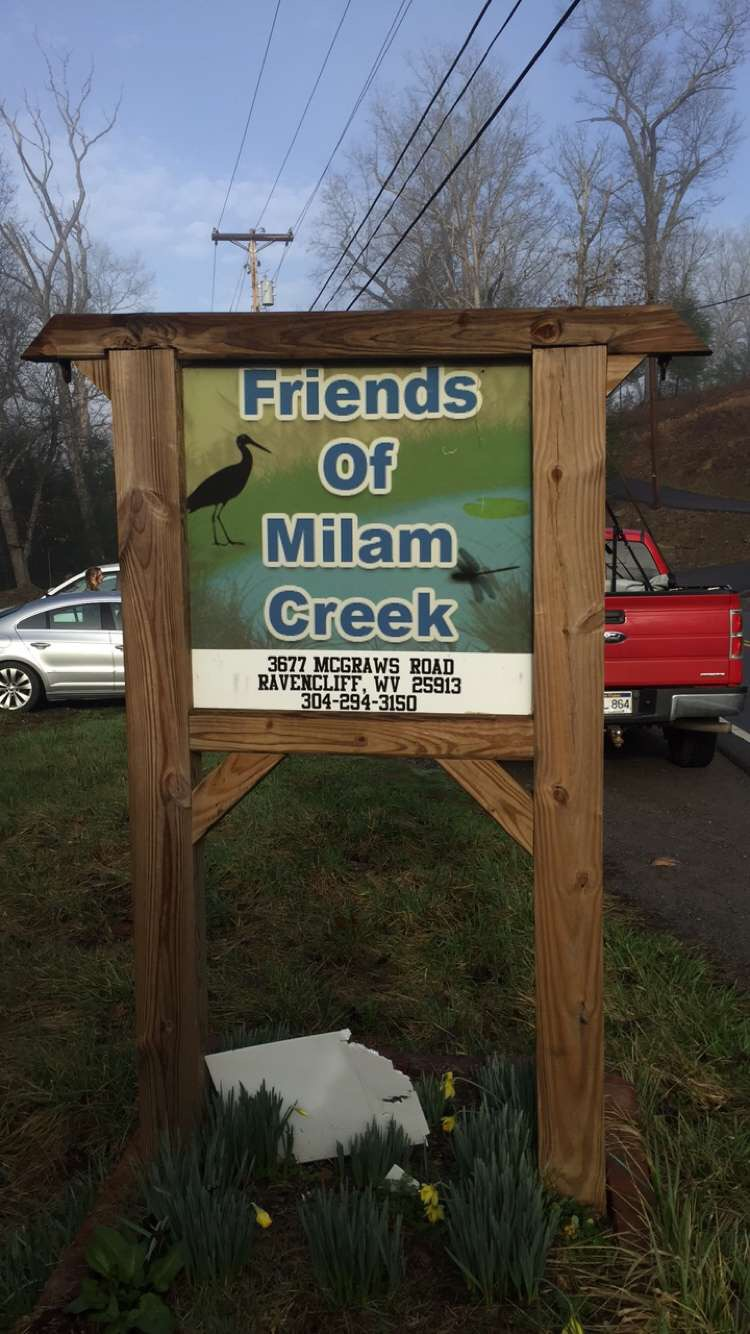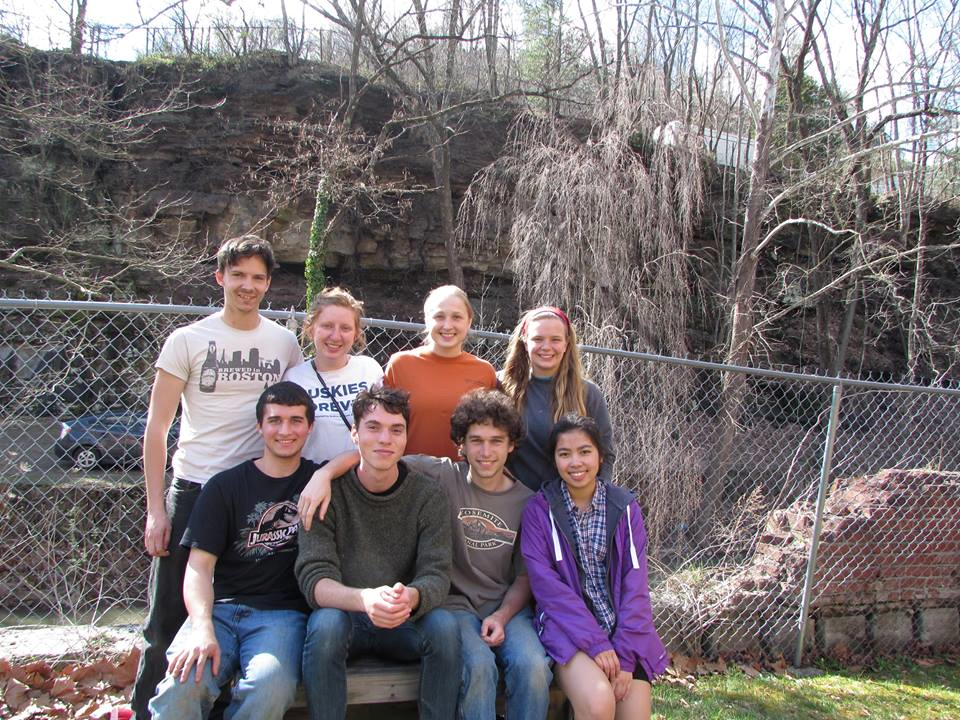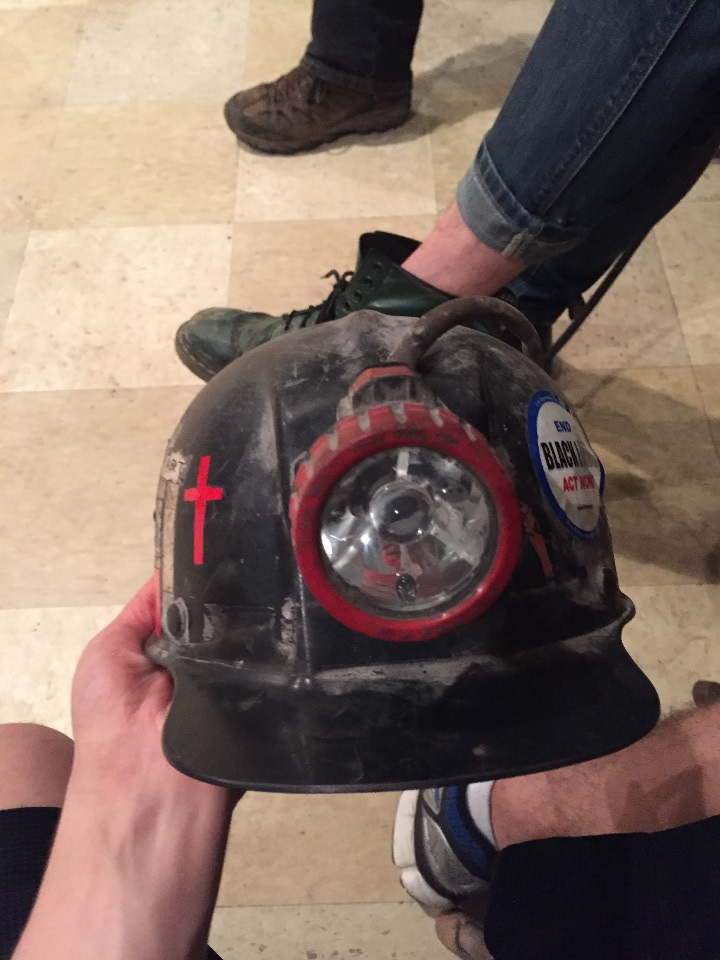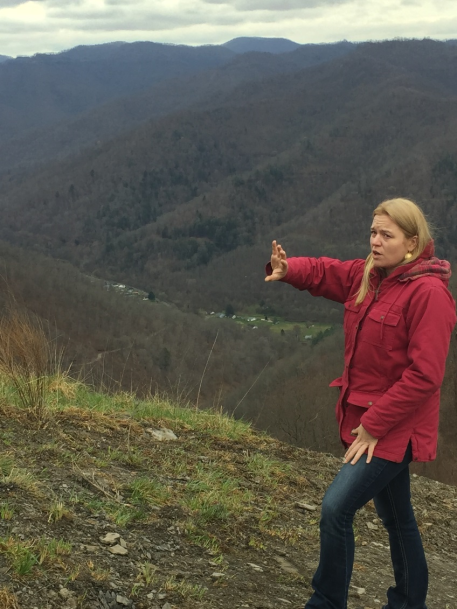 This Spring Break, I had the privilege of participating in EcoHouse’s fourth annual service trip to Milam Creek and Glen Rogers in Wyoming County, West Virginia. Initiated by former EcoHouse program coordinator Brigid Belko, this Alternative Break assists the Friends of Milam Creek on various service projects. This organization is composed of local volunteer residents who seek to revitalize their community. In their own words: “Aspiring to restore Milam Creek and its adjacent neighborhoods to its former glory with clean, lush waters and creek beds, Friends of Milam Creek is uniting the community through collaborative action toward a healthier environment and better tomorrow.”
This Spring Break, I had the privilege of participating in EcoHouse’s fourth annual service trip to Milam Creek and Glen Rogers in Wyoming County, West Virginia. Initiated by former EcoHouse program coordinator Brigid Belko, this Alternative Break assists the Friends of Milam Creek on various service projects. This organization is composed of local volunteer residents who seek to revitalize their community. In their own words: “Aspiring to restore Milam Creek and its adjacent neighborhoods to its former glory with clean, lush waters and creek beds, Friends of Milam Creek is uniting the community through collaborative action toward a healthier environment and better tomorrow.”
The Appalachian Community
 Dvon Duncan, Friends of Milam Creek’s Secretary, and Donna Burner, Chair, welcomed us all warmly and gave an introduction to the town and its situation. The Milam, McGraws, Ravencliff, and Glen Rogers region of the county is one of many small, relatively isolated communities in southern West Virginia that has been severely impacted by the coal industry over the last century. For decades, the timber, gas, and coal industries have held a virtual monopoly on the region. At one time mining companies forced workers to buy all provisions from company stores, preventing the growth of local businesses. Most men in the area have worked in the mines at some point in their lives, since there are few other jobs available to them. In addition to very poor working conditions, the mines have polluted the surrounding watersheds with heavy metals and coal residue. As a result of landscape modification, the narrow creek and river valleys where most towns lie have been prone to massive and deadly floods.
Dvon Duncan, Friends of Milam Creek’s Secretary, and Donna Burner, Chair, welcomed us all warmly and gave an introduction to the town and its situation. The Milam, McGraws, Ravencliff, and Glen Rogers region of the county is one of many small, relatively isolated communities in southern West Virginia that has been severely impacted by the coal industry over the last century. For decades, the timber, gas, and coal industries have held a virtual monopoly on the region. At one time mining companies forced workers to buy all provisions from company stores, preventing the growth of local businesses. Most men in the area have worked in the mines at some point in their lives, since there are few other jobs available to them. In addition to very poor working conditions, the mines have polluted the surrounding watersheds with heavy metals and coal residue. As a result of landscape modification, the narrow creek and river valleys where most towns lie have been prone to massive and deadly floods.
Now, as coal production declines in the face of natural gas and renewable energy, more layoffs and few alternative job options have resulted in a high unemployment rate and a general feeling of hopelessness for the once thriving communities. And on top of all this, the area is suffering a ‘brain drain,’ as those who can afford higher education often move away and don’t return. Dvon stressed that our work here is essential to providing a place where people young and old can safely play and exercise. There are no other sources of recreation for this community except Milam Creek Park. An important goal for Friends of Milam Creek is to re-educate their community about the importance of taking care of all their natural resources.
 Throughout the week, we worked on several projects around the community. The main location was the Milam Creek House, where the Friends are based. Here, we helped to remove rotten wood from the basement and paint the building. Down the road, we helped to renovate the recently donated community center. This involved setting up electrical wiring and lighting throughout the building, as well as demolishing the old restrooms. Meanwhile, several people cleared invasive plants from the nearby creek bank to make room for a fishing deck. The final major project was the construction of a memorial to the more than 160 miners who died in Glen Rogers mines between 1917 and 1960. We installed a new fence and pathway on site to make way for the stone obelisk that will honor the dead.
Throughout the week, we worked on several projects around the community. The main location was the Milam Creek House, where the Friends are based. Here, we helped to remove rotten wood from the basement and paint the building. Down the road, we helped to renovate the recently donated community center. This involved setting up electrical wiring and lighting throughout the building, as well as demolishing the old restrooms. Meanwhile, several people cleared invasive plants from the nearby creek bank to make room for a fishing deck. The final major project was the construction of a memorial to the more than 160 miners who died in Glen Rogers mines between 1917 and 1960. We installed a new fence and pathway on site to make way for the stone obelisk that will honor the dead.
As we worked, we got to meet many local residents and gained some insight on what it was like to live there. Dave Polk, for example, chatted about what it was like to grow up here. He told us that when he was young there were dozens of bird species in the area, even in winter. The whip-poor-will’s call would announce the arrival of spring, and soon the woods would be full of wildflowers. Now, he explained, the environment has become degraded. He hasn’t seen a whip-poor-will or a wildflower in years, and urbanization has forced remaining wildlife into developed areas. Like many young men, Dave soon found himself working ten to twelve hours a day in the coal mines. Throughout his time working he’s seen many changes in the community, including the end of segregation in the industry. According to Dave, the community as a whole was always far more tolerant of diversity than the mines, where African Americans and European immigrants used to receive very poor treatment until very recently.

However, when I spoke with Dvon later on the issue of race, she said that to most people coal mining was the ‘great equalizer.’ “One had to depend on the person working next to them for their individual safety. There was no room for prejudice in the mines. While African Americans and European immigrants might have been treated differently outside the mines in other parts of the community, when you were working inside the mines – everyone was someone of color – coal black. Communities DID center somewhat on nationality – but much of that was because of language…and food…and familiarity.”

Doug Thorn gave a presentation on his work as a miner and a mine inspector. He showed us the gear that miners carry, including a methane gas detector, oxygen tank for emergencies, and light. Doug then explained that while he worked as an inspector, he came across numerous safety violations from different companies as they tried to avoid regulations. He’s been in court several times to force mines to temporarily shut down as gas or coal dust buildups were drained, and continues to challenge mines on their hazardous conditions. Doug himself has developed black lung, in spite of all the precautions he’s taken over the years.

We also met Jack Spadaro, an expert witness and environmental consultant, who came to speak to us about how he combats these illegal mining activities. He became active after the 1972 Buffalo Creek Flood killed over 120 people and destroyed over 4,000 houses. It was discovered that the flood resulted from leaky dams that filled with coal and metal slurry, then spilled into the valleys below. The pollutants have caused numerous health issues in the victims and birth defects in their children, but for years the mines refused to take responsibility. Some have even illegally hid the documents linking them to the pollutants. Many floods have occurred since 1972, the worst of which destroyed 3,000 more homes in 2001. Jack has worked on hundreds of cases and investigations, many of which have resulted in at least some financial compensation for the victims. However, Jack warns that over 700 reservoirs remain full of mining waste, and many are poorly maintained. There could easily be more disasters in the near future if nothing is done.
Mountaintop Removal

Before leaving West Virginia on Saturday, we got to see the heart of modern environmental devastation in Appalachia. Kayford Mountain, owned and managed by Keeper of the Mountains, is a sliver of protected land surrounded by mountaintop removal. We met with Elise Keaton, who has worked for many years to promote awareness and push for action against the industry. She gave us insight into this now prevalent form of mining.
The shift away from reliance on manpower began in the 1970s, as the growing energy crisis and increasing environmental regulations brought companies to search for more efficient methods of coal extraction. Instead of sending miners underground, companies raze entire forests and level the mountains with explosives. Debris is forced down into the valleys and watersheds, which in turn has caused the heavy flooding in recent decades. Elise showed us several mountains that have lost up to 800 feet of elevation. Diverse forests have been reduced to barren wastelands, and the ground beneath Kayford has begun to crack as the rock destabilizes. Furthermore, the mining is continuing to expand. At this time, 500 mountains have been demolished, and every mountain around Kayford is slated to be removed as well.

In spite of growing up in West Virginia, Elise herself was unaware of mountaintop removal until she was in college. Unfortunately, hundreds of thousands of other people in West Virginia remained uninformed of the devastation going on in their own back yard.
Unfortunately, there are no easy solutions to this crisis. Overall coal production continues to decrease as it’s replaced by natural gas and renewables, but the United States still consumes over 700 million tons of coal per year. As long as there is a demand for coal, the industry will continue to supply. 30-40% of our nation’s energy is currently supplied by coal, and the Department of Defense relies heavily on fossil fuels. And until new industries – energy or otherwise – develop in Appalachia and other coal producing communities throughout the United States, large portions of the population will remain jobless and/or impoverished for the foreseeable future.

There is still hope for the region’s natural environment. When mining companies do follow regulations, hard and soft wood trees and native species can be planted on reclaimed land. Some of that land has been turned over to communities. For example, Dvon recently helped with planting in the Tomblin Wildlife Management Area, managed by the West Virginia Department of Natural Resources. Here, some of the ridgetops have been surface mined and reclaimed to ‘wildlife habitat,’ most recently by Alpha Natural Resources. On top of this, the DNR plans to reintroduce elk to the new preserve. Additionally, in a separate project, Cliffs Natural Resources planted 9,000 trees with help from the two Wyoming County high schools. Here, there is a plan to introduce American chestnut hybrids.
I’m incredibly grateful for my experiences on this trip. I got to bond with other environmentally-minded UConn students, meet the wonderful people of West Virginia, and gain insight into one of the most challenging environmental crises our country faces. I hope to continue to raise awareness of the problems of fossil fuels, and go back to help the residents of Milam Creek in the future.
-Ben
Learn more about the issues surrounding coal mining: http://www.mountainkeeper.org/the-problems/
Find out how much you rely on coal: http://ilovemountains.org/my-connection